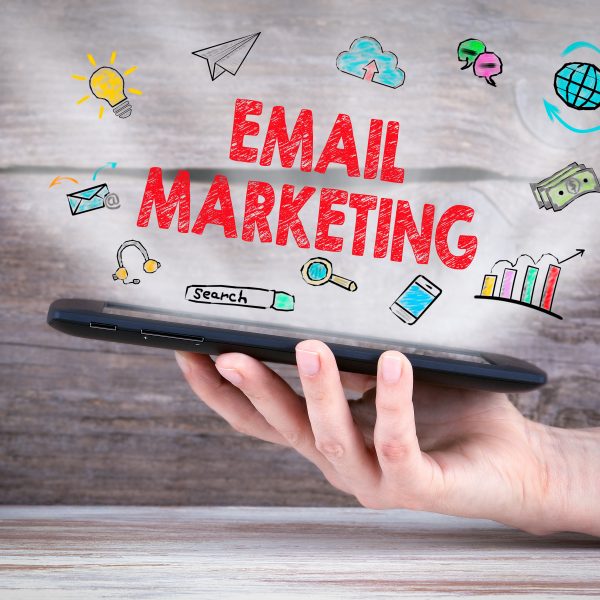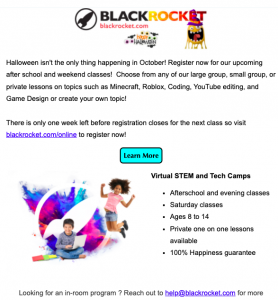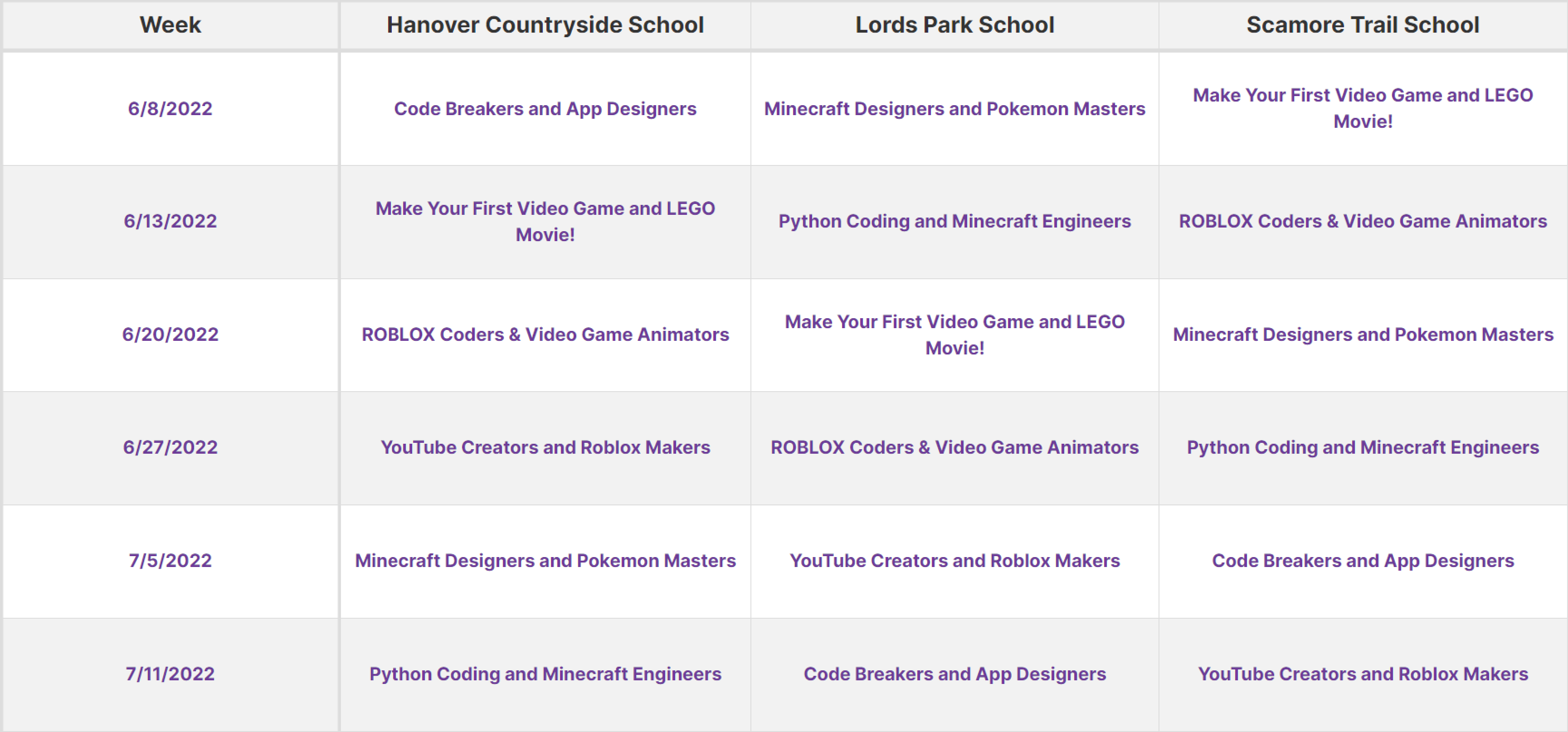Reintroducing Your Summer Camp: Email Marketing

Promoting a summer camp in a technology focused world can be challenging. However, one of the simplest and most overlooked techniques to drive enrollment and awareness is the email campaign. This tool is so effective that one study conducted by a nationwide provider of summer camps found emails can drive 35% of total enrollment! In this second installment of our series on ‘Reintroducing Your Summer Camp’, we will outline a step by step guide on how to send effective emails.
Generating A Good List
One of the things that makes email campaigns the most commonly used marketing technique is because they do not require much money. You do however need a list to send the campaigns to. For existing camps this should not be a problem, but for camps that are just starting fresh you can buy lists, use the general school list, or reach out to local PTO/PTA organizations and ask them to send emails on your behalf. If your list is small it will be important to use other methods to create a good list such as going to local events or paid Google or Facebook ads. If you do decide to buy a list the average cost for 1,000 records you can pay anywhere between $150-$400.
Topics The Readers Want
In addition to emails about courses or offerings, send emails showcasing student projects or success stories. Many of our partners have a camper of the week or camper of the day program. Get video testimonials from moms and dads about their experience at camp. Just remember that every email should have a call to action. If you are not asking people to register for a program, ask them to opt in to your mailing list or to learn more about what your camp has to offer. People love a deal! Be sure to add in incentives and coupons whenever possible.
How To Write a Good Email Campaign
Follow this checklist when creating a campaign:
- Write an attention grabbing subject line. The subject line is what will make or break your email campaign simply because it’s the very first thing people see when they receive an email from you. Will they want to open it or will they leave it unopened and put it in their junk folder? Similar to the title of a breaking news article, you want it to catch their eye. In the email example below, we used the subject line “Last Week to Register For Our October Classes!”, which has a sense of urgency and attracts attention from readers. A subject line can even be one word “Please…” or “Amazing…”. Remember the goal is to get the recipient to open the email.
- AB Testing. If you’re between two subject lines and not sure which one to go with, you can do what’s called AB Testing. Split your mailing list into two groups, and send a different subject line to each. By doing this you can also see which one does better and use those analytics to help guide you for your next campaign.
- Make sure your email is clear and concise. No one reads anymore! Our attention spans are short and our brains are overloaded with information. The last thing you want is the reader to be confused, bored, or distracted when reading your email. You want your email to be short and to the point. Use lots of bullet points and phrases as opposed to full sentences.
- Pictures beat words! Give it some vibrancy, pictures, and anything else that will grab attention quickly and make people enjoy reading your email. For summer camps in particular, this is important because you want to market your camp as fun, friendly, and engaging for kids. Bright colors, pictures of the camp or of activities you offer, or even videos will help boost interest when people are opening your email.
- Include a call to action. Sure, informing people about your camp is great but if they aren’t given a reason to visit your website they probably won’t do it on their own. The call to action should be the last thing they read, and it could be a link to your website, your social media pages, or just any incentive that will motivate them to follow through.
Most importantly, make sure you track the registrations from your email campaigns. This can be done with google analytics, setting up separate landing pages for each campaign, or using different promo codes in each campaign.
Staying Away From the Spam Folder
Once you have your email campaign created, it’s important to make sure that they’re being sent to their main inboxes and not their spam. If their email service detects unusual activity, they will automatically send it to their spam folder. There are a few things to keep in mind when writing your email campaigns to make sure this doesn’t happen:
- Create an opt-in list. The number one way to avoid going to spam is to have a list of people that opt in to your emails.
- Don’t put too many links. This is one of the major things that will set off the spam filter because it seems like you’re trying to scam them into clicking a link that could cause a virus or any other unwanted issues.
- Limit the use of images. Keep your image use to a minimum of 3 and make sure they are purposeful and enhance the message of your email.
- Stay away from cliche sales words. Using words like “free”, “promo”, and “urgent” or phrases like “get it now” and “click this for a discount” will raise a red flag in their email system. Look through your own spam folder and look for qualities that come up frequently! Anything you see in those emails you want to avoid using.
- Send them sparingly. We recommend one a month in the off season and two a month in the months leading up to summer.
Email Campaign Software
Using a third party marketing software is essential and will make your experience much smoother. Platforms like Zoho, Mail Chimp, and Constant Contact provide customer relationship management services (CRM) including email campaigns. You can create your emails using their tools, upload the email list and mass send them out through their service.
The main reason to use these tools is that they provide statistics and analytics so you can see the effectiveness of your campaigns. Always compare the open rate, click rate, and unopened rate. This is valuable information to guide you as you adjust your messaging. However you approach your email marketing make sure you measure, measure, measure! This is the only way to know if your communications are effective.
Whether you’re starting as a new camp or trying to reinvent, email marketing is the way to go if you’re looking for a strategy that’s easy to do and effective. Stay tuned for more digital marketing tips on social media, paid advertising, and more!

